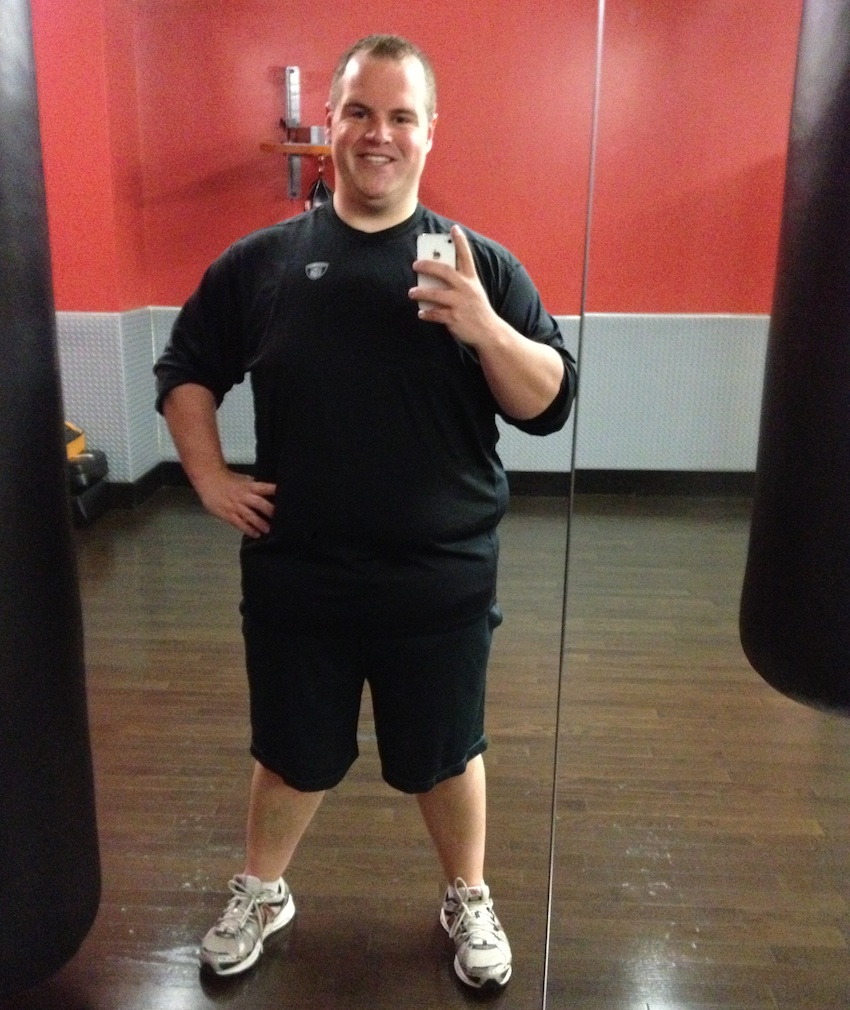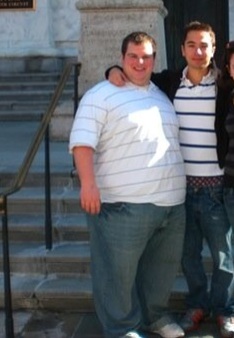Real Weight Loss: Matt Sheaff

Sheaff today, 120 pounds lighter. Photos provided
A year ago, it wasn’t uncommon for Matt Sheaff to drink a dozen diet sodas a day. He ate in restaurants almost every night. His gym membership went unused. Eventually, he knew it was time for a change, and not just a small one—Sheaff set out to lose 100 pounds.
“It hit me that I really had to change myself, especially when I learned that I had high blood pressure and was pre-diabetic and my cholesterol wasn’t too great,” he remembers. “Even though on the outside I had great friends and I looked happy, I never really felt comfortable.”
Sheaff, then living in Washington, D.C. and working in public relations, began by enrolling in Weight Watchers and hitting the elliptical at the gym. Last October he moved to Boston, and in February of this year he began working with Tim Khanoyan, a personal trainer at Equinox. “I made a commitment that if I’m going to do this, I’m going to do it for me. I’m going to go at it full steam ahead, I’m going to make totally different choices,” Sheaff says. “I’m very happy where I am. I want to lose another 50 t0 60 pounds, but I’m the happiest I’ve been in my life.”
Sheaff says the decision to get fit is one that has drastically changed his life for the better, and he encourages anyone struggling with weight issues to do the same. “I say to Tim all the time, ‘You’ve helped me save my life,'” he says. “There’ll be days when the scale won’t move, there’ll be days when you gain weight, there’ll be days when you don’t want to do it and you’re in pain, but the end result is so worth it.”

Sheaff at starting weight.
In total, Sheaff says his weight loss amounts to 120 pounds so far, 70 of which he lost during the nine months he’s worked with Khanoyan. Here’s how he did it:
Workout: Khanoyan says his tactic all along has been building on fundamental movements and adding difficulty as Sheaff’s fitness level improves. Some exercises he commonly suggests include leg presses, elevated push-ups, stairs, medicine ball slams, and mountain climbers. To ensure that Sheaff keeps losing weight, Khanoyan says a combination of workouts is also key. “I knew that we had to make sure that he was working as intensely as he could so we’re burning as many calories as possible, but in the meantime, you’ve got to be building strength at the same time,” Khanoyan says. “Half the workout would be ‘supersets,’ where we do a strength exercise followed by a metabolic exercise. We’d do a lower body, then we’d do an upper body, then we’d do a core exercise, and we’d do a total body. He’s still achieving new things every day.”
Sheaff says two to three days a week are devoted to personal training with Khanoyan, and two to three are for classes at Equinox (cycling is a favorite), jogging, and independent gym sessions. “I actually enjoy going to the gym now,” Sheaff says. “It’s just this feeling of accomplishment I get after I do a class. It’s not a chore; it’s just this is what life is for me.”
Diet: “We’ve been making baby steps for his diet all the time, just keep on changing the next thing,” Khanoyan says. “First it was get soda out of the diet; then it was let’s add more protein to your diet; then it was let’s try to clean up these meals.”
Now, Sheaff says, his diet is heavy in salads and lean protein like hard boiled eggs, chicken, and cod—and he’s only had “two or three” Diet Cokes since February. “One of the big changes I’ve noticed is Monday through Thursday I eat dinner at my house probably every night, and then I go out with friends on the weekend,” Sheaff says. “I’m still a normal 29-year-old. I still go out with friends and still have drinks and go to restaurants, it’s really about moderation.”
Motivation: Sheaff admits that his journey hasn’t been easy—and didn’t happen overnight—but says he motivates himself with the promise of the end result. “Sometimes it’s frustrating, because a lot of times when people think of trying to get healthy, they think of the number on the scale,” Sheaff says. “It’s really having to train myself [to think] that, while the number on the scale is important in the long run to judge progress and whatnot, it’s being able to do things that I haven’t been able to do before.”
Do you want to share your weight loss story? Email: mmalamut@bostonmagazine.com


